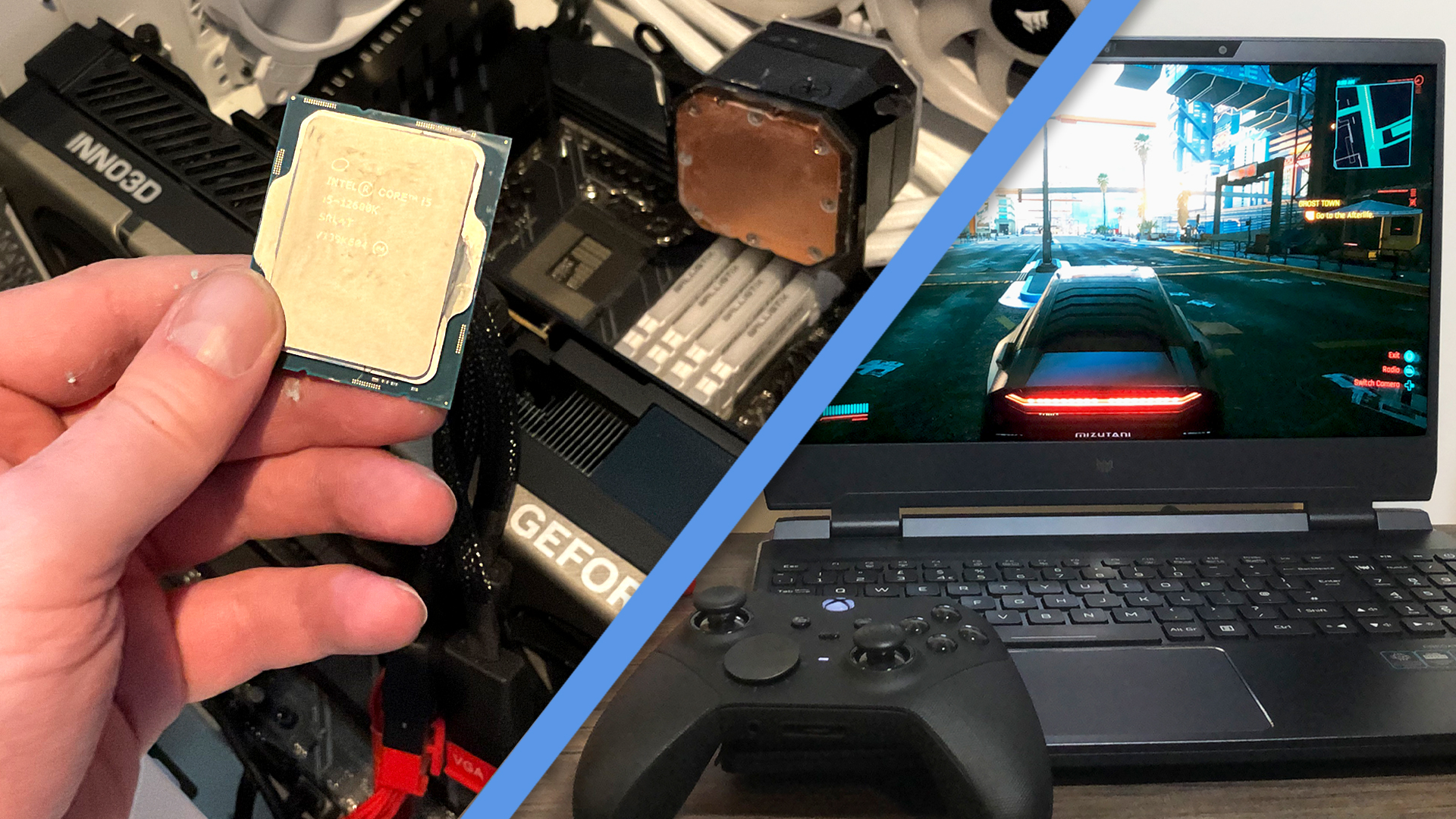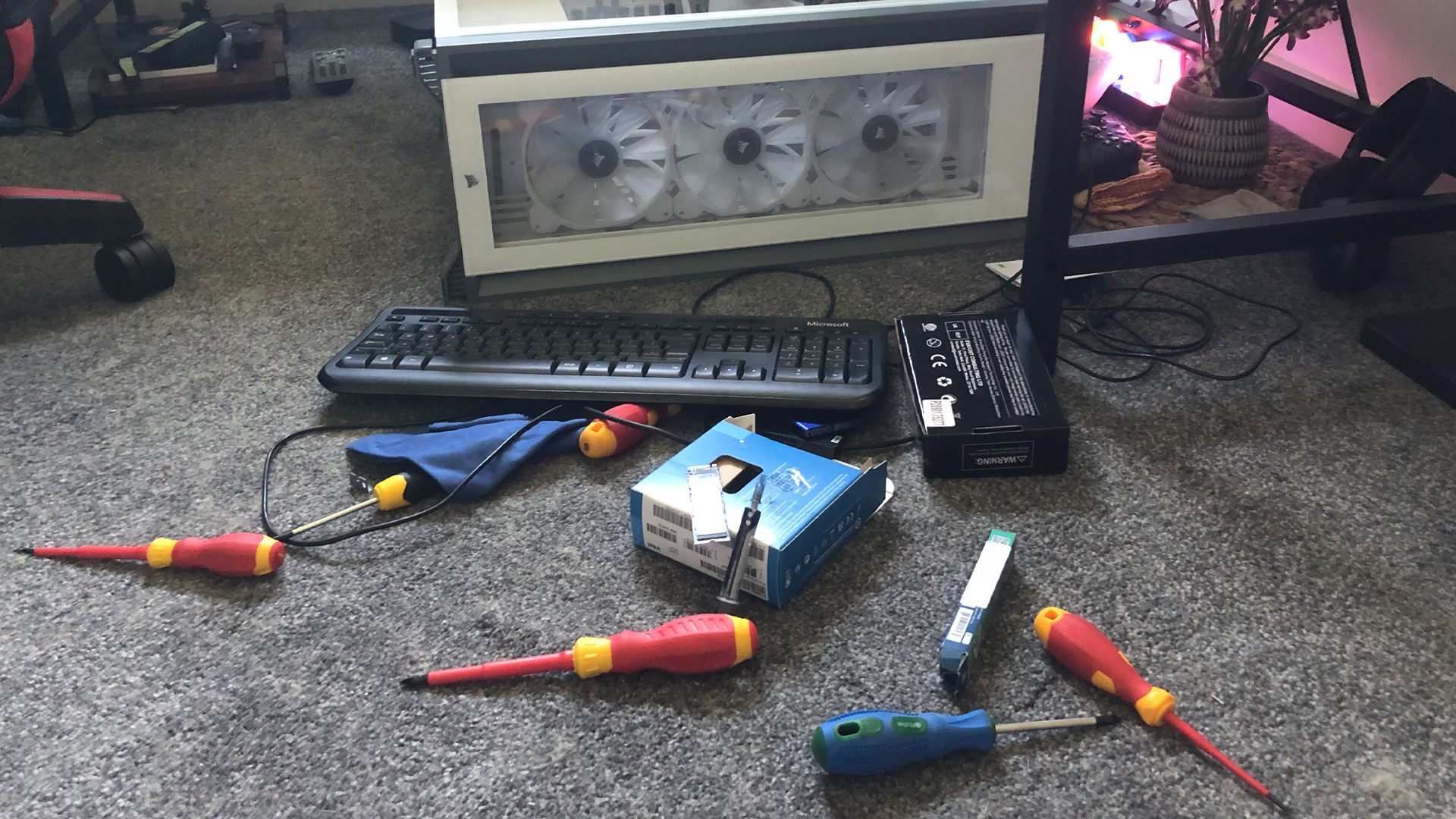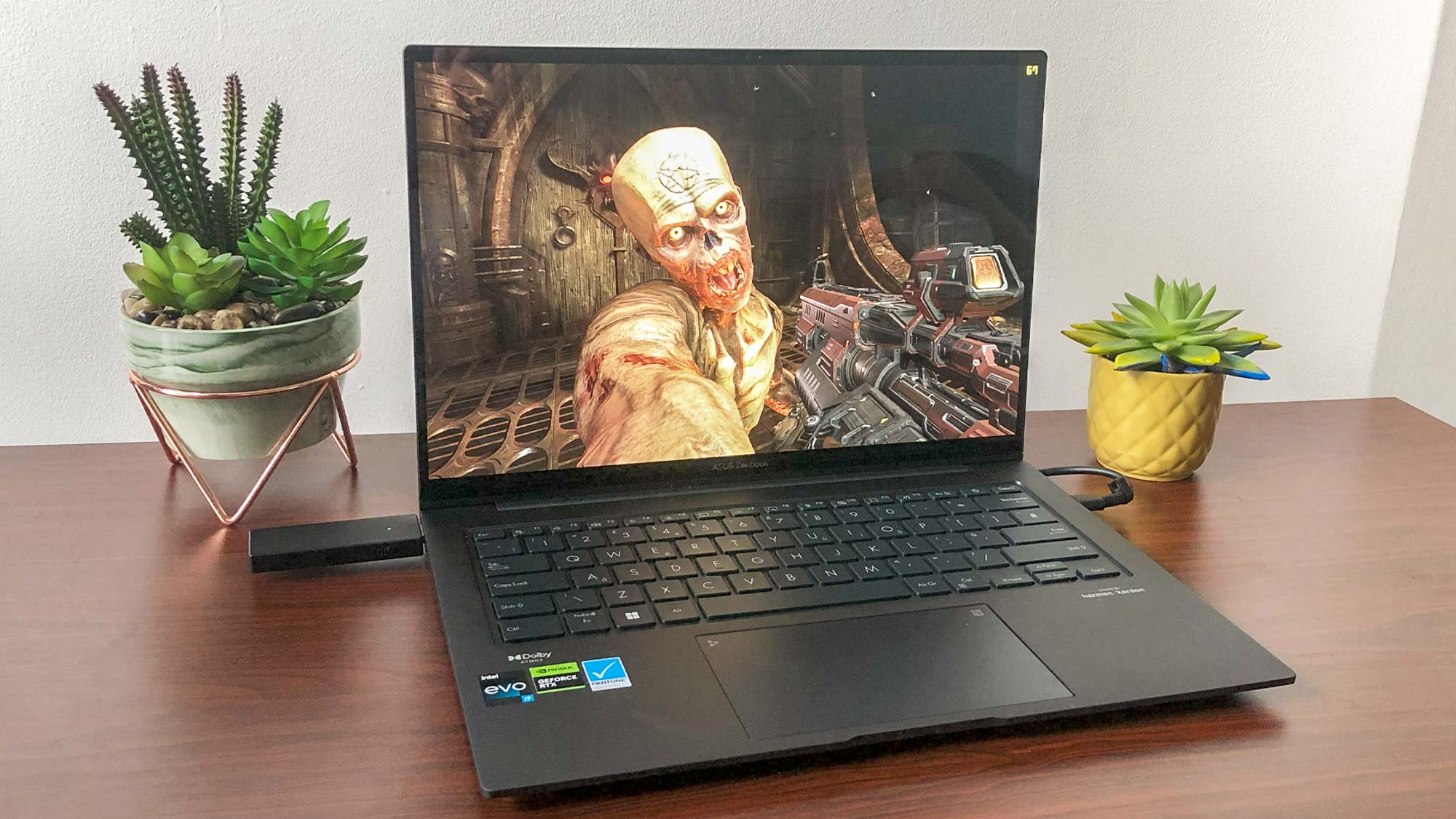
PCs were a mistake. Wait, let me backtrack a bit. Gaming PCs were a mistake. No hold up, that’s not entirely true. Spending two decades of my life building (occasionally functioning) gaming rigs. Now that was the error to end all errors.
At the time of writing, I’m in a bad way. I may own one of the best gaming PCs, but I’ve barely slept since yet another calamity struck my homemade desktop. To make matters worse, I’ve just discovered there’s thermal CPU compound encrusted under my nails.
Yes, I am quite the catch.
I built my first gaming PC back in 2004, in what now seems like truly simpler times. Sure, my Radeon 9200SE GPU could barely get Far Cry to run above 15 fps, but that didn’t matter.
What really mattered was the weird thrill of assembling disparate parts, then seeing them join in unison to create a functioning computer.
What a disaster
Honestly, that first build made me feel like a nerdy superhero. Being able to install a CPU is definitely as impressive as X-ray vision, right?
Fast forward 19 years, and if you showed Teenage Me what was to become of his burgeoning hobby, he would have probably gone back to playing his PS2 for the rest of time. Turns out, putting together your own PC can end in disaster.
When things are running smoothly, my setup should look like this…

And when things are slightly less smooth? Brace yourself…

Recently, I tried (and failed) to install the 13th Gen Intel Core i9-13900K CPU. Due to my motherboard’s outdated BIOS, I sadly couldn’t get the world’s fastest gaming processor to boot. With tail firmly between legs, I decided to go back to my trusty i5-12600K, because yes, I actually use my Nvidia GeForce RTX 4090 powered rig for work. Overkill, I know.
Somewhere along the line, sh*t went south, as you can clearly see above. While I’ve at least gotten my PC to boot again since taking that shot, I’m now hobbled by Windows 11’s dreaded Blue Screen of Death. My error message: ‘Inaccessible Boot Device’.
Reading this message again and again after at least a dozen failed launch attempts has made me want to boot my PC, alright… boot it directly into the sea.
I want to boot my PC... directly into the sea
I’ve Googled the problem, but amazingly, a host of passive aggressive Reddit suggestions haven’t been overly helpful. I ‘think’ I may have accidentally dislodged my main NVMe SSD while fiddling with my PC’s innards, though I’m not entirely sure. To my eyes, my drive looks correctly installed, yet my gaming rig has now been out of commission for several days. At this point I’d probably shed actual tears when (and if) it ever turns on again.
I’m not quite at the stage where I’m willing to reinstall Windows 11 — like a moron, I haven’t backed my main drive up in months. Alas, I am beginning to accept the fact I may lose a shedload of documents, handy PhotoShop templates and about 14,000 Steam screenshots of the best PC games I’ve never once looked at.
Laptop of honor

At least this SSD-ruining experience has taught me one thing: laptop gaming rules.
I’ve been lucky enough to test some of the best gaming laptops in 2023 since I started on Tom’s Guide, and it’s been an absolute pleasure for the most part.
Aside from the odd overly noisy fan, the handful of laptops I’ve tested have just worked. Having such an enjoyable experience using the likes of the Asus Zenbook 14X OLED (and falling hard for its incredible screen) has reminded me why I love hassle-free gaming. Sometimes, ‘just’ working is the most important thing in the world.
My inner fps snob may occasionally wince when it comes time to drop the odd graphics setting from high to medium, but it’s something I’ve quickly stopped sweating over. After putting my 4K-ready beast of a gaming rig on temporary life support, I’m all too happy to play games on pre-built laptops that function without fuss.
Oh, and playing games from the comfort of my sofa, rather than a spine-pummelling office chair? Bliss.
As for gaming laptops I'd currently recommend, you can't go wrong with the Asus ROG Zephyrus G14, the MSI Cyborg 15 or the Alienware m18.
After putting my 4K-ready beast of a gaming rig on temporary life support, I’m all too happy to play games on pre-built laptops
Which obviously isn’t to say buying one of the best laptops or a custom-built gaming PC can’t come with its own pitfalls. For one thing, you usually pay a steep premium by letting a company assemble components you could probably put together yourself with a little research.
Still, there’s a lot to be said for firing up a laptop actual professionals have made, then losing yourself in the intoxicating delights of Cyberpunk 2077’s Night City. And all without having to worry about whether you’ve upset your NVMe drive’s heatsink or not.
Will I fix my monster of a gaming rig at some point? Obviously. Will I gunk up my fingers and shred my wits putting together future builds for 'fun', though? Probably not. There just comes a time in life where you have to say farewell to thermal paste.







